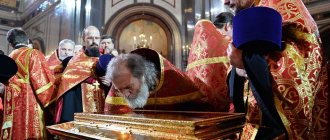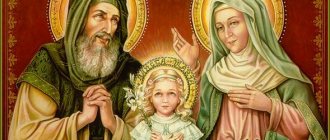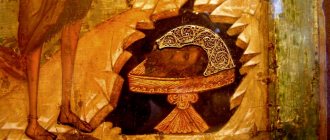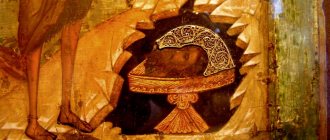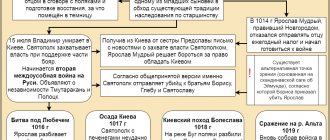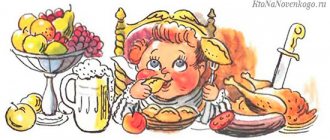Relics of saints, what makes them unique
After the death of a righteous person, the body turns into remains, they are called relics. Power is strength, that’s what bones were called in ancient times, emphasizing the strength of the main part of the once living body.
Holy relics are the remains of deeply religious people, canonized as celestials, who, during their lifetime, performed deeds pleasing to God to the Creator. They are endowed with enormous power of grace.
Many parishioners, especially those who personally knew true believing messengers of God who performed miracles, including healings, note that after death their relics help those who come to them with requests.
Veneration of the relics
The Orthodox Church adopted the veneration of the relics of saints in 787 with the Second Council of Nicaea. Since that time, a teaching has appeared in the Church statutes according to which relics are considered bearers of grace and should be preserved and venerated.
There are several reasons for the establishment of this seemingly strange custom of venerating relics.
- Orthodox believers can clearly see that people who lived a righteous life are canonized and their relics do not decay.
- In worldly life, people worship busts, monuments to great people in the history of mankind; Orthodox believers have a clear example to follow in the form of the lives of Christians faithful to the Lord.
- The Church claims that during prayers the saint, whose relics are kept in the temple, is invisibly present.
If a church does not have at least part of the holy remains, the Sacrament of the Eucharist is not celebrated there.
Relics are carriers of the forces of grace; this is one of the foundations of the deep dogmas of the Orthodox Church, standing on the Incarnation and Redemption.
Folk cults
The story of the Robe of the Lord brings us to another aspect of the veneration of relics and shrines: popular cults. Let us draw attention to the fact that the cult of veneration of the Robe of the Lord in Moscow never took shape. The miraculous nature of the shrine was recognized, the hierarchy approved the veneration, but a mass cult did not develop. And I must say, this is a normal phenomenon. Because in ancient Rus' there were never mass cults such as we see now. Until the end of the 19th century. And why? Yes, because the end of the 19th century is, firstly, the beginning of the era of mass information, and secondly, the era of decadence, the collapse of genuine church consciousness. This is the time when grace begins to be confused with magic. They begin to look at the relics as a magical remedy: if your knee hurts, apply the relics and you will recover faster. It is a very difficult issue to distinguish between fetishization and true worship, but it is very important. And, unfortunately, we ourselves unwittingly contribute to fetishization by our attitude towards relics, even genuine ones.
The attitude towards these shrines should be more calm and chaste. We are not all eager to receive communion at the Church of the Holy Sepulcher in Jerusalem. We understand that at the moment of the Eucharist, any altar of any rural church is Golgotha and the Church of the Holy Sepulcher. For modern people, this high symbolism of the Orthodox church consciousness stops working, and this is very sad.
For example, now there is a custom - to carry earth from the grave of a saint. But this never happened. This is truly from the realm of folk magic! And most importantly, everyone knows this very well. But still there is a queue, like to the Mausoleum, for the earth from the grave of St. Matronushka. Here, really, if you add everything up, it turns out that several multi-ton trucks have already been carried away. And in the Caucasus, the veneration of Theodosius of the Caucasus takes similar forms. The hierarchy has already taken measures to have his relics transferred to the temple - and to no avail! People don’t go to church, but buy land from the grave. There is a stall there where they sell it in bags; a whole mine has already been dug...
That is why both Patriarch Filaret in the 17th century and Metropolitan Seraphim in the 19th century did not bless such haste. Because they were very afraid of the hype. Let us remember what ugly forms the lifetime veneration of St. John of Kronstadt took. He himself suffered greatly from this. Instead of reverently kissing the priest’s right hand, other “fans” tried to bite his finger in order to receive some kind of magical power with a drop of the saint’s blood. In recent years, he had to serve behind bars, which were placed on the pulpit so that no one, God forbid, would tear him apart. Where did the “Johnites” come from – then and now? From the darkening of religious consciousness. This is a sign of something unhealthy in the very atmosphere of national and state life. Then it was the eve of the crash. And now? And it's scary. By the way, this is also the reason for the confusion around the Taxpayer Identification Number, etc. Everyone has already said: theologians, the clergy, and His Holiness the Patriarch: don’t worry about the Taxpayer Identification Number. No, entire parishes, almost entire dioceses are ready to split because of the tax identification number.
This is fetishism: Taxpayer Identification Number, land from Matronushka, land from Feodosius... With all due respect and our universal love for Sergei Aleksandrovich Nilus, we cannot fail to mention here his “museum of the Antichrist” - a chest in the closet where he stored, for example, galoshes with a triangle sign , because these products of the famous Triangle factory allegedly trample on the Trinity. This is a fetishistic understanding, materialistic at its core, of the teachings of the Church about the signs of the coming of the Antichrist, and about holiness, and about the forms of its veneration. God forbid us to do this!
What do holy remains look like?
According to human concepts, remains include either the skeleton of a deceased person or his incorruptible body. This is a deep misconception. Many saints died a martyr's death, some were burned, and only ashes remained, and some were torn to pieces by lions, leaving only a certain part of the body untouched.
Holy relics are different parts of the body, bones or ashes.
Holy relics
Holy remains also include incorruptible bodies, the most recognizable of which are:
- Sergius of Radonezh;
- St. Ambrose;
- St. Luke and many other saints.
Important! According to an innovation of the seventh century, worship in the temple can only be held where the relics of a saint are kept, who invisibly patronizes the temple and its parishioners.
What significance does the veneration of holy relics give to people?
- Moral significance and influence on the souls of living people, as it reminds of the personality of the righteous, his faith, and behavior. This encourages people to follow their example and do the same things and feats. An awakening comes in people's minds, especially remembering the great martyrs, encouraging people to righteousness.
- Significance for worship, making it special, as it reminds that both the living and the dead are one in one Church. That earthly life is not the end. You can look at Orthodox cemeteries and see that the graves still look like thrones in churches. Because earlier, where there were no churches, believers could hold services directly at the graves of dead saints.
- Of course, the practical significance is miracles . Even in the most hopeless situation , a person has hope for a miracle, through the imperishable source of strength in the holy remains!
Why are the relics of saints not buried and how are they preserved?
The remains, which have miraculous powers, are not buried, but are preserved in temple crayfish, special boxes made of expensive wood and skillfully decorated with carvings, gold and stones. The transfer of remains from the burial place according to church custom is called the discovery of relics.
On patronal and major church holidays, cancer is displayed so that every person can honor the deceased saint and receive the power of grace from him.
Open shrine with relics
Sometimes holy remains are divided into several parts, so that each temple has its own part of the relics.
The Church emphasizes that holiness is not in the relics themselves or their parts, but in the grace emanating from them.
Procedure
Let us return, however, to the relics. There are no specific periods after which the veneration of holy saints begins. For example, when St. died. Alexander Nevsky, he was taken to be buried from Gorodets to Vladimir. The Life of the Holy Prince says that when Metropolitan Kirill wanted to place a letter of permission into the hand of the deceased, the prince himself extended his hand. The veneration began instantly, without any deadlines. It was the same with the miracles of St. Peter of Moscow. Before they had time to bury him, miracles and veneration immediately began. But it happens differently: miracles begin only after many years. Only the Lord knows the times and timing. Therefore, the Church, both in ancient times and now, gives time to witness. What will happen? The Lord will show. There is no need to rush and rush things, you need to wait. The Lord and the church people will have their say.
Previously, there was no specific procedure for opening, identifying and glorifying saints. In normal church life, what procedures and protocols might there be? Yes, of course, there must be evidence of power, evidence of grace, evidence of healing power - this has always been required. But there might not have been any formalized procedure. This, again, is all borrowed from the Catholic protocol - Catholics have a gradation of holiness: beatification, canonization, etc. But we do not have this. Saint means holy. A saint – he is a saint even during his lifetime.
Sometimes people doubt whether the venerated relics are actually the relics of this particular saint. This issue is resolved only and exclusively by our trust in Church Tradition. Church historian N.N. Glubokovsky said that Orthodoxy cannot be proven in general; it is not a mathematical theorem. You can show it, present it: here is St. Seraphim of Sarov, here is Father Nikolai from the island of Zalita - this is Orthodoxy. The situation is exactly the same with belief in the authenticity of relics. For example, in the sacristy of the Jerusalem Church of the Holy Sepulcher there is a bone on which it is written that this is the bone of Mary Magdalene. There was no document with her and there never will be. This is a matter of faith – and trust in the Church. Believe it or not. Another 11th century author Jacob Mnich, hagiographer of St. Princess Olga, wrote that you can lean close to the coffin with her relics and look and see her. But the one who embraces it with faith sees it incorruptible, and the one without faith sees nothing. By the way, the relics of Saint Princess Olga, like Prince Vladimir, were lost, they do not exist. They existed before the Mongol invasion and then disappeared. And what now, because of this they have ceased to be saints? Of course not.
Often the relics of a saint are either missing or hidden, and an empty tomb - a cenotaph - is displayed in churches to venerate him. This is a normal and very traditional ancient phenomenon and there is nothing wrong with it. One saint of God, when in 1903 she was told about St. Seraphim: “They say that only bones remain of your Seraphim, what kind of saint is this?” - answered: “We do not worship bones, but God’s grace!”
It is also wrong to believe that the authenticity of the relics must necessarily be confirmed by any documentation. After all, for some, a document can be a life, while for others, it can only be what is issued by a notary and sealed with a seal. If we need the second option, then we must take into account that there is no notarized certificate with a seal for any relics; this has never been done - neither in ancient times, nor in modern times. Another thing is hagiography, the lives of saints. It is necessary. About the ancient martyrs - acts of martyrdom, about the saints - lives, which, as a rule, were written by the closest disciples soon after the death of the saint. So Epiphanius the Wise, 20 years after the death of St. Sergius, wrote his life, where he says that he still saw all the eyewitnesses and talked with them. What other documents do we need?
Incorruptible bodies - myth or reality
The incorrupt bodies of saints, emitting incense, baffle science and many scientists to this day. After all, according to the laws of the Church, embalming people is prohibited, and the bodies of saints after death emit favorable odors, and each body smells unique.
Egyptian pharaohs are embalmed with special compounds, but they still emit foul odors. Studies have shown that the body structure of saints changes, so this is impossible without God’s intervention.
The Church sees in this phenomenon the future resurrection of people, as promised in the Bible. Not all saints remained incorrupt, but special grace was bestowed on the remains of St. Spyridon of Trimifunt and St. Alexander of Svir.
Relics of St. Alexander of Svirsky.
Longing for resurrection
It is said about incorruptible bodies in the Old Testament prophecy: “Thou shalt not allow Thy holy one to see corruption” (Ps. 15:10). For believers, the incorruptibility of bodies is a reminder of the future general resurrection of the dead and eternal life; it is not for nothing that early Christians collected the remains of holy martyrs and reverently kept them.
Metropolitan Macarius (Bulgakov), who lived in the 19th century, in his book “Orthodox Dogmatic Theology,” characterized the incorruption of relics as “their removal by the miraculous power of God from the universal law of corruption, as if as a living lesson to us about the future resurrection of bodies.”
However, according to church teaching, the presence of incorruptible relics is not yet a prerequisite for canonization. Archbishop Veniamin (Krasnopevkov-Rumovsky) wrote that if the church finds bodies in the ground that have not been turned into the dust of the earth, then it venerates them either as holy relics or as the bodies of those excommunicated. Holy relics, according to Archbishop Benjamin, are considered bodies that emit a pleasant smell and fragrance - if they “shine with some rays of beauty,” and the undecayed bodies of excommunicated sinners “are inflated and like a bell or a bubble, very black and ugly.”
When canonizing incorruptible relics, greater attention is paid to the presence of “miracles” through prayers to the ascetic, otherwise canonization is not performed.
Saint Matrona is one of the remains revered in Russia
During her life, Matronushka, as her admirers affectionately call her, was a simple blind peasant woman, but very loving of God. Residents of the surrounding areas noticed that miracles were happening through Matrona’s prayers. As the saying goes, the folk path to it did not grow. The folk soothsayer could not refuse people’s prayers even when she fell ill, and she helped those asking until her death.
Guardian of the relics of St. The Moscow Orthodox monastery became Matrona, where people still come to ask Matrona:
- become an intercessor before God in resolving controversial issues;
- grant healing;
- set up a business;
- free from the curse of infertility.
Pilgrims often come with requests to help find something or someone, missing people.
Prayers to Saint Matrona of Moscow:
- Prayer for good luck and luck
- Prayer for purchasing a home
- Prayer for Marriage
Before approaching the shrine of St. Matrona, people must undergo a short training. You cannot approach holy relics in outer clothing; it is left outside, along with other things and bags. You can only bring flowers to the patron saint; the entire shrine is covered with them.
Saint Matrona
After reading a special prayer, you need to cross yourself twice and bow the same number of times with a deep bow, touching the ground with your hands, only after that you can kiss the sacred box. Then repeat the ritual of laying the cross and bowing.
Prayer to Matrona of Moscow
O blessed Mother Matrono, with your soul standing in heaven before the Throne of God, with your body resting on earth, and exuding various miracles by the grace given from above.
Look now with your merciful eye on us, sinners, in sorrow, illness and sinful temptations, our waiting days, comfort us, desperate ones, heal our fierce ailments, allowed by God to us through our sins, deliver us from many troubles and circumstances, pray to our Lord Jesus Christ forgive us all our sins, iniquities and falls, in whose image we have sinned from our youth even to this day and hour, and through your prayers having received grace and great mercy, we glorify in the Trinity the One God, the Father, and the Son, and the Holy Spirit, now and ever and ever. Amen.
According to the testimony of people who have visited Saint Matrona, the answer is felt immediately; if the person asking leaves in peace, everything will be fine. In case of anxiety in the heart, the request is rejected because it is unnecessary or does not bring any good.

